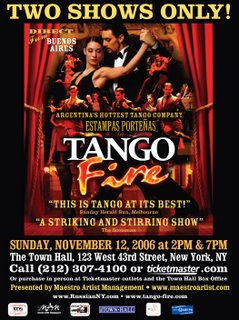Contents
Thursday, September 28, 2006
WARNING!!!
While not proven to cause pregnancy,
Tango dancing can be dengerously addictive.
Posted by
Milonguita
at
10:50 AM
0
comments
![]()
Buenos Aires Tango Tour - Specially for Women!!!
TANGUERA TOURS
Life is too short to sit and watch others dance. Leave the cruise vacations for your eighties! Rejuvenate yourself with a guided tour of the romantic, mysterious world of tango in Buenos Aires.
Either individually or enjoying the camaraderie of a small group of other tango afficionados, you will explore a carefully selected assortment of milongas, sightsee, dine in local favorites, and learn from exceptional tango professionals.
All programs strive for a superior level of quality and customer attention. We put our knowledge and discriminating criteria to work so that your trip is unbeatable and memorable.
Tanguera Tours began as the first permanently operating all-women Buenos Aires tour operator and continues running these unique bonding trips for women looking to live out their dance dreams for 10 exciting days.
Posted by
Milonguita
at
10:29 AM
0
comments
![]()
Labels: Buenos Aires, Travel
Books about Tango
ABRAZOS books is a publishing house with headquarters in Germany. Its objective is to promote Latin American literature - with a special emphasis on Argentinean culture - and to make it accessible to readers all over the world. In a process of steady expansion, ABRAZOS books is presenting a series on tango music and the teaching of tango as well as about Argentina. This collection has published titles in German, English, Italian, Spanish and French, while more titles in the mentioned languages are being prepared.
If culture constitutes the lifestyle of a people, the book is the natural means to communicate such a given culture to the other cultures, and thus be the bond, the necessary link between the present and past generations and those to come.
Jorge Luis Borges once said, "I pretend that I am not blind and keep on bringing books into my house. Although I fail to see those books I can feel their friendly gravitation all around me". It is precisely that friendship of books and the magical world of their authors what ABRAZOS books intends to pass on to its readers.
Posted by
Milonguita
at
10:24 AM
0
comments
![]()
Tango Dancing and Other Tango related Translations
| Terms | Translation | Short Definitions | |
|---|---|---|---|
| English | German | ||
| abrazo | embrace, dance hold | Umarmung, Tanzhaltung | some articles about the dancing frame |
| amague | |||
| arrastre | arrastrar = to drag | ||
| barrida | a sweep | as in sweep with a broom :-) | |
| base | basic pattern | Grundschritt | There are several basic patterns, all called "base". |
| boleo | |||
| calecita | merry go round, happens at the quebrada | ||
| cadena | chain | Kette | |
| cafe con leche | ;-) Something you take for breakfast, perhaps together with a medialuna | ||
| caminada | caminar = walk | gehen | |
| celesita | |||
| corrida | correr = to run | run, implies a short sequence of forward steps, rather than a basic | |
| corte | cut | (Ein)schnitt | |
| cruzada | cruzar=to cross | kreuzen | |
| enrosque | corkscrew | Korkenzieher | |
| entrada | entrance | eintreten, Eingang | |
| firulete | embellishment, ornament | Verziehrung | |
| freno | brake | Bremse | |
| gancho | a hook | Haken | |
| giro | a turn | Drehung | |
| lapiz | pencil | Bleistift | |
| llevar | to lead, to carry | führen, tragen | |
| llevada | a carry, happens when the leader uses the upper thigh to "carry" the follower's leg top the next step, needs illustration to understand! | ||
| llevada | marcar | ||
| media vuelta | half turn | halbe Umdrehung | |
| Milonga | dance, mother of tango also: an 'event' where you dance tango (let's go to the milonga tonight) | ||
| dancing hall, where tango is danced | |||
| molinete | molino = mill, as in windmill molinete = grapevine | Mühle | a dance move, in A. Tango this is typically in a circle around the leader |
| mordida (=sandwich) | morder = to bite | beißen | The foot of one partner is "trapped" between the two feet of the other partner. If the legs of this other partner are crossed, then it is a reverse mordida. |
| ocho | eight | acht | very basic figure, the feet of the follower mark an 8 on the floor |
| ocho cortado | cut eight | happens when an molinete or an ocho-like movement is stopped and sent back upon itself. Typical in club style where many such brakes are used to avoid collisions! Needs a teachers explanation, since I am unclear on all the different movements in this category. | |
| parada | a stop | Halt | |
| quebrada | break | Bruch | a position where the woman stands on one foot, the other one hanging relaxed behind the standing foot, often seen with the woman hanging with all her weight against the man |
| resolucion natural | natürlicher Abschluß | ||
| reverse mordida | see mordida | ||
| rondo | |||
| sacada | |||
| salida | exit, go out | Ausgang | first steps of dancing tango, derived from: "Salimos a bailar" = Shall we (go out to the dance floor and) dance? |
| sentada | sentar = to sit | (hin)setzten | |
| yengue | Arrabalero, of low social status. |
| A way of interpreting or dancing tango | |
| A reunion (party) where the people from the arrabal (the slums) dance. | |
| The sound obtained from the double bass when the strings are hit rhytmically with the hand and the bow. | |
| Candombe | A type of dance danced by (originally) the descendants of black slaves in the Rio de la Plata region. |
| A type of african-origin music with a marked rhythm played on a "tamboril" (kind of drum). | |
| The place where the blacks congregated to dance. | |
| Tango | Popular music from the Rio de la Plata region dating back to the middle of the XIX century. It was defined by a 2 x 4 beat until the decade of the '20s in the XX century, and a 4 x 8 beat thereafter. |
| A type of african-origin music with a marked rhythm played on a "tamboril" (kind of drum). dance where an embraced couple perform a series of (sometimes intricate) patterns primarily with their legs, to the rhythm of tango m | |
| Direct descendant of the Candombe, Habanera, Milonga, and (by some tango scholars) the Tango Andaluz. | |
| The place where the blacks congregated to dance to the rhythm of drums. | |
| (Note: entire books and lives have been dedicated to the search for the ultimate definition or origin of the word "tango", i.e., this is only a minimal subset of the available definitions.) | |
| Milonguero | A man who likes to attend the milongas. |
| A person whose life revolves around dancing tango and the philosophy of tango. | |
| Payador pueblero (traveling folk-music singer.) | |
| A title given by other tango dancers to a man who has mastered the tango dance and embodies the essence of the tango. | |
| Milonguera | Female dancer (for hire) of the early dance halls, cabarets, and nightclubs. |
| A woman who likes to attend the milongas. | |
| A woman whose life revolves around dancing tango and the philosophy of tango. | |
| A title given by other tango dancers to a woman who has mastered the tango dance and embodies the essence of the tango. | |
| Milonguita: A woman of loose morals, often times a prostitute. | |
| Tango Liso | A way of dancing tango characterized by its lack of fancy figures or patterns. Only the most "basic" tango steps and figures are utilized, e.g., caminadas, ochos, molinetes, etc. Ganchos, sacadas, boleos and other fancy moves (such as leaps, sentadas, and all acrobatics in general) are not done. |
| Tango de Salon | A way of dancing tango characterized by slow measured moves. It includes all of the "basic" tango steps and figures plus some sacadas, giros, and low boleos. The emphasis is on precision. The dancing couple remains at a "proper" distance from each other, i.e., their bodies are *not* in a close embrace. This is what happened to the tango when the French and the English got a hold of it in the early part of the century (pre-World War I) :^) This is the style of dance that most people who run milongas wish people did, and the style most dancers wish the *other* dancers did... :^) |
| the terms 'Tango de Salon' and 'Tango Milonguero' seem to be interpreted differently by different dancers and teacher, so one should be aware that other people might think of something different when they talk about 'Tango de Salon' | |
| Tango Danza | Tango dance (in Spanish). |
| Tango for Export | A way of dancing tango much derided by the milongueros of Buenos Aires. It's a tango without soul. This is a tango that plays well in the cabarets of Paris, New York, Berlin, or Tokyo because most of what made it a Porte~no dance (one that spoke directly to the soul of the Argentino) has been stripped away, leaving only the fancy moves and pseudo passion for the enjoyment of an exotic- loving public. |
| Tango Fantasia | This a hybrid tango. An amalgam of traditional tango steps and ballet, ballroom, gymnastics, ice-skating figures, etc. This is what most people see when they buy tickets for a tango show. The moves include all of the basic tango moves plus, ganchos, sacadas, boleos of every kind, sentadas, kicks, leaps, spins, and anything else that the choreographer and the performers think they can get away with. The music played might not even be a "real" tango, i.e., it can be Jazz, a bastardized classical piece, etc. Alas, this is the style of dancing most prevalent at the milongas outside of the Rio de la Plata region. Usually badly performed by ill-behaved tango dancers and frustrated tango performers who insist in getting their money's worth at the milonga even if they have to kick, step, bump into, or trip every other dancer on the floor. |
| Tango Orillero | Orillero means "of the outskirts". Thus, this was a style of dancing tango that was "outside" of the prevalent way of dancing. Nowadays, is more defined by its quick moves, kicks, and acrobatics. See "Juan Bruno" for more details.... ;-) |
So far, the definitions for these general Tango terms are from Caran Fanfunfa (Thanks for your work!)
You are all invited to add further definitions to this list.
Posted by
Milonguita
at
10:13 AM
0
comments
![]()
Portable dance floor

American Portable Dance Floors
- Hotels
- Resorts
- Convention Centers
- Recreations
- Church facilities
- Studios
- HOME PRACTICE!!!
Posted by
Milonguita
at
9:51 AM
0
comments
![]()
Labels: Dance, Milongas, Tango Shows
Wednesday, September 27, 2006
Music Sheets
Lyric: Horacio Ferrer
Music sheet: Astor Piazzolla
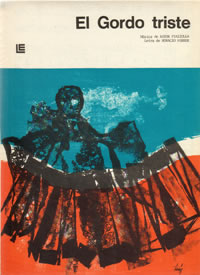
Lyric: Juanca Tavera
Music sheet: Ismael Spitalnik
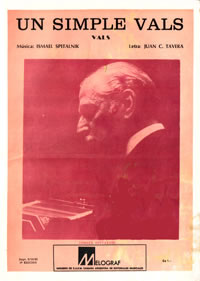
|
|
|
PROFESSIONAL TRACKS FOR SINGERS
ROBERTO RIAL PRODUCCIONES is a company dedicated exclusively to the music. Their tracks are used for singers everywhere, professionals as well as amateurs.
Tango Legends and a Story
Villoldo and his criollo tango, “Sacame una película, gordito” | ||||
| By León Benarós | ||||
| |
No other but an Italian that came to our city in 1905 fronting the choir of an opera company that stayed in Buenos Aires when his partners left. This character had jobs as pianist at cafés where writers, theater people, and journalists used to go. But his destiny was another one. The beginnings of cinema tempted him. So in 1908 he became the pioneer of Argentine cinema when he made the first film with script in its history. His name was Mario Gallo. He had two partners for the distribution of foreign movies. Later he shot short documentaries like “Plazas y paseos de Buenos Aires” (Plazas and promenades of Buenos Aires) and lastly he began “El fusilamiento de Dorrego” (the shooting of Dorrego) with actors of our theater milieu.
Thereafter he shot “Juan Moreira”. It was adapted by a future man of tango, José González Castillo and the young actor Enrique Muiño was starred. Around 1910 he shot “La creación del himno” (the creation of the anthem) and “La revolución de mayo” (The revolution of May). The same year he made “Muerte civil” (Civil death) starring the tragic Italian Giovanni Grasso. Later on, among other titles, it’s worthwhile to highlight “La batalla de Maipú” (The battle of Maipú), shot in the location that today occupies the River Plate stadium and, previously, a race track. The actors that played the role of San Martín and O´Higgins had never before rode on horseback. Because of that they fell to the ground when they tried the historical embrace. Gallo left his imprint in the industry of cinema and opened the big screen to the historic genre. He had his years of fame. As the history of tango includes a great portion of the daily history of our city and of our country too, someone paid attention to him. In this case, a founding name like that of Ángel Villoldo’s. |
Posted by
Milonguita
at
1:55 PM
0
comments
![]()
"Solo Tango" TV Channel on line
SOLO TANGO TV Channel on line
Videos
Performances
Tango lessons
Programmes
Buenos Aires
Singers
Tango History
Posted by
Milonguita
at
1:32 PM
0
comments
![]()
Labels: Buenos Aires, Music, Musicians, Poets, Singers, Tango Shows
Milonga in Centrar Park
 FREE TANGO
FREE TANGO
in Central Park EVERY SATURDAY in NYC
RAIN or SHINE
This milonga is located at Shakespeare Statue (across from the Columbus Statue at the beginning of Literary Mall* - the opposite end of Bethesda Fountain and Summer Stage*)
From 6-9pm. If RAIN we are at or move to the DAIRY a short distance away.
FREE TANGO LESSON - 7:30pm.
Click HERE totsign up and see all the Photos Trey Parker has taken at the Central Park Milonga.
Posted by
Milonguita
at
1:27 PM
0
comments
![]()
Labels: Milongas
Tuesday, September 26, 2006
Lunfardo - Argentinian Slang
Lunfardo was a colorful, slangy argot of the Spanish language which developed at the end of the 19th century and beginning of the 20th century in the lower classes in and around Buenos Aires.
Many Lunfardo expressions have entered into the popular language and have become an integral part of the Spanish spoken in Argentina and Uruguay. A few have been recognized even by the Real Academia Española. Lunfardo is frequently found in the lyrics of tangos, supplying nuances and double-entendres with overtones of sex, drugs, and the criminal underworld.
Much of Lunfardo arrived with European immigrants, such as Italians, French, Portuguese, and Poles. It should be noted that Italian immigrants spoke their regional dialects and not standard Italian; other words arrived from the pampa by means of the gauchos; a small number originated in Argentina's black population.
Most sources believe that Lunfardo originated in jails, as a prisoner-only argot. Circa 1900, the word lunfardo itself (originally a deformation of lombardo in several Italian dialects) was used to mean "outlaw".
Lunfardo words are inserted in the normal flow of Rioplatense Spanish sentences. Thus, a Mexican reading tango lyrics will need, at most, the translation of a discrete set of words, and not a grammar guide.
Tango lyrics use lunfardo sparsely, but some songs (such as El Ciruja, or most lyrics by Celedonio Flores) employ lunfardo heavily. "Milonga Lunfarda" by Edmundo Rivero is an instructive and entertaining primer on lunfardo usage.
A characteristic of lunfardo is its use of wordplay, notably vesre (reversing the syllables). Thus, tango becomes gotán and café con leche (latte, café au lait) becomes feca con chele.
Lunfardo employs ingenious metaphors such as bobo ("dumb") for the heart, who "works all day long without being paid", or bufoso ("snorter") for pistol.
Finally, there are words that are derived from others in Spanish, such as the verb abarajar, which means to stop your opponent's blows with the blade of your knife and is related to the verb "barajar", which means to cut or shuffle a deck of cards.
- Manyar - To know / to eat (from the Italian mangiare -to eat-)
- Morfar - To eat (from French argot morfer -to eat-)
- Laburar - To work (from Italian argot lavoro -work-)
- Algo voy a cerebrar - I'll think something up (cerebrar from cerebro -brains-)
- Chochamu - Young man (vesre for muchacho)
- Gurí - Boy (from Guaraní -boy-) Feminine: gurisa - girl. Plural: gurises - kids
- Garpar - to pay with money (vesre for "pagar" which means to pay)
- Gomías - Friends (vesre for amigos)
- Fiaca - laziness (from the Italian fiacco -weak-)
- Engrupir - To fool someone (origin unknown, but also used in modern European Portuguese slang).
- Junar - To look to / to know (from Caló junar -to hear-)
Since the 1970s, it is a matter of debate whether newer additions to the slang of Buenos Aires qualify as lunfardo. Traditionalists argue that lunfardo must have a link to the argot of the old underworld, to tango lyrics, or to racetrack slang. Others maintain that the colloquial language of Buenos Aires is lunfardo—by definition.
Some examples of modern talk:
- Gomas (lit. tires) - woman's breasts
- Maza (lit. mace or sledgehammer) - superb
- Curtir (lit. to tan) - to be involved in
- Curtir fierros can mean "to be into car mechanics" or "to be into firearms" (see Notes below)
- Zafar - to barely get by (see Notes below)
- Trucho - counterfeit, fake (see Notes below)
Many new terms had spread from specific areas of the dynamic Buenos Aires cultural scene: invented by screenwriters, used around the arts-and-crafts fair in Plaza Francia, culled from the vocabulary of psychoanalysis, or created by the lyricists of cumbia villera.
Only a very staunch conservative would deny lunfardo status to this verse from cumbia villera band Los Pibes Chorros ("The Thieving Boys"): "Al primero que se haga el ortiba / por pancho y careta le vamos a dar" (see Notes below).
NOTES
- Zafar is actually a standard Spanish word (originally meaning to extricate oneself) that had fallen out of use and was restored to everyday Buenos Aires speech in the 1980s by students, with the meaning of "barely passing (an examination)".
- Trucho is from old Spanish slang truchamán, which in turn derives from the Arabic turjeman ("translator", referring specifically to a person who accosts foreigners and lures them into tourist traps). There is also a folk etymology that derives this word from trucha (trout). Reference (Spanish)
- Fierro is the Old Spanish form of hierro (iron). In Argentine parlance, it can mean a firearm or anything related to metals and mechanics, for example a racing car.
- Ortiba is vesre for batidor ("informant" in lunfardo).
Posted by
Milonguita
at
3:17 AM
0
comments
![]()
Labels: Buenos Aires, History, Poets
Lunfardo Dictionary (Argentinian Slang Dictionary)
Download the Lunfardo Dictionary from La Cueva de Krak Tango. (Only spanish version)
Posted by
Milonguita
at
3:10 AM
0
comments
![]()
Tango Movies
List of Tango movies from 1912 to 1999.
Tangoed Lives (1999)
Three to Tango (1999)
Tango, the Obsession (1998)
Tiara Tango (1998)
Tango (1998)
Tango Lesson, The (1997)
Michael Kael in Katango (1997)
...aka Michael Kael contre la World News Company (1998) (France)
...aka Michael Kael vs. the World News Company (1997)
Malena es un nombre de tango (1996)
Asphalt Tango (1996)
Best of Tango, The (1996)
Tango (1996)
Russian Tango (1996)
Sátántangó (1994)
...aka Satan's Tango (1994)
...aka Satanstango (1994) (Germany)
Tangotango (1993)
Tango feroz: la leyenda de Tanguito (1993)
...aka Tango Feroz (1993)
...aka Tanguito (1993)
...aka Wild Tango (1993)
Augustitango (1993)
Tango (1993)
Tango Argentino (1992)
Letzte Tango in Wien, Der (1992)
Naked Tango (1990)
Tangospieler, Der (1990)
...aka Tango Player, The (1990)
Tango & Cash (1989)
Two to Tango (1988)
Tango Bar (1988)
Tango Bayle nuestro (1987)
...aka Tango, Our Dance (1987)
Tango blu (1987)
Tango du Midi (1987)
Tango nashego detstva (1985)
...aka Tango of Our Childhood (1985)
Blonder Tango (1985)
Tangos, l'exile de Gardel (1985)
...aka Tangos, el Exilio de Gardel (1985)
...aka Tangos, the Exile of Gardel (1985)
Tango im Bauch (1983)
Damskoye tango (1983)
...aka Ladies' Tango (1983)
Tango (1982)
Tango durch Deutschland (1981)
Spurs of Tango (1980)
Tango ptaka (1980)
...aka Bird's Tango (1980)
Último tango en Madrid, El (1975)
Primo tango a Roma - Storia d'amore e d'alchimia (1973)
Ultimo tango a Parigi (1973)
...aka Dernier Tango à Paris, Le (1973) (France)
...aka Last Tango in Paris (1973)
Bruna, formosa, cerca superdotato per tango a Milano (1973)
Ultimo tango a Zagarol (1973)
Matratzen-Tango (1973)
...aka Secrets of Naked Girls (1973) (UK)
Tango Argentino (1969)
Tango del viudo, El (1967)
Tango pro medveda (1966)
Matango (1963)
...aka Attack of the Mushroom People (1965) (USA: TV title)
...aka Curse of the Mushroom People (1963)
...aka Fungus of Terror (1963)
...aka Matango the Fungus of Terror (1963)
...aka Matango: Fungus of Terror (1963)
Mi último tango (1960)
Kriminaltango (1960)
Del cuplé al tango (1958)
Historia del tango, La (1949)
Vida es un tango, La (1939)
Tango Notturno (1937)
Tango (1936)
Tango Bar (1935)
Tango en Broadway, El (1934)
Torch Tango, A (1934)
Tango (1933)
Tango (1931)
Tango do amor (1931)
Tango für Dich, Ein (1930)
Tango Cavalier (1923)
Tango Dancers, The (1920)
Tango Tangles (1914)
...aka Charlie's Recreation (1914)
...aka Music Hall (1914)
Tango in Tuckerville (1914)
Kri Kri e il tango (1913)
Tango-Königin, Die (1913)
Max, professeur de tango (1912)
Onnen maa (1993)
...aka Tangoelokuva onnen maa (1993)
Posted by
Milonguita
at
2:41 AM
0
comments
![]()
Labels: Buenos Aires, Dance, History, Music, Musicians, Poets, Tango Shows
Carlos Gardel - The King of Tango
Known as El Zorzal Criollo, the songbird of Buenos Aires, Carlos Gardel is a legendary figure in Argentina. The charismatic French-born singer's career coincided with the development of that intrinsically Argentine cultural icon, the Tango, the music, song and dance of Buenos Aires' tenements - arrabales.
Carlos Gardel was born on Dec. 11, 1890 in Toulouse, France (as Charles Romuald Gardes) to unknown father and Berthe Gardes (1865-1943) who brought him to Argentina at 27 months of age). Gardel's sky-rocketing career was cut short in 1935, when he lost his life in a plane crash in Medellin, Colombia on June 24, 1935. Hordes of people thronged to pay their respects as the singer's body made the journey traveling via Colombia, New York, Rio de Janeiro and Montevideo to his final resting place in La Chacarita cemetery, Buenos Aires with the multitude listening to his tango Silencio. Instantly immortal and preserved forever young, his enduring fame is measured by the oft-heard Argentine expression "Gardel sings better every day". Sixty eight after his death, a devoted following keeps the legend blazing, playing Gardel's music daily and placing a lit cigarette in the hand of the life-sized statue which graces his tomb and keeping his few films in circulation. | |
| | |
| What is the Tango? In those times the tangos were almost never sung. They were the Creole estilos and tonadas. Then came the tango-song, sentimental or mischievous, suburban and colorful, with pains of absence, contradicting loves, bully's stab and the weeping of a deceived girl. The poets of the humble Buenos Aires flourished and in each neighborhood bandoneón was heard modulating tangos with themes from songs coming from all the ports. In the same crucible of races that fused the Buenos Aires man, the tango-song found its form, the pains of the boy of this land, that the wind took across the seas to move the restless girls of Paris or to enchant the blonde Anglo-Saxon millionairesses. It is not enough to have the most melodious voice to intone a tango. No. In addition, it is necessary to feel it. One has to live in its spirit. I live it, I feel it in the sweet glance of a beautiful and well-endowed woman who sees me drive by in my fast "voiturette"; I know that I am the tango when after leaving the racetrack the crowd of men follow me with their glances; I am not deceived when the tailor takes pains to make me his best suit or the saleswoman looks for the prettiest necktie for me. I know that the tribute is to the tango. I am for them the tango. And I like it, because I feel more like I belong here. Even though I intone a sweet French song, even though people listen to my beautiful notes of "Parlez moi D'Amour", I know that I am the singer of tangos who lends himself for other songs. | |
| | |
| "People do not understand what I do, they think that I make the money without doing anything. And I do make it, it is certain; I make a lot, but work many hours of the day. So that they realize, this figure is enough: I get to record twenty songs each month. In addition to the recording, which in that form has to be almost daily, taking into account the instrumentation, the harmonization of guitars, the modifications that should always be introduced, so that the song and the instruments work well, and it will be visible what is my life; very pleasant, I cannot complain, only about the continuous work."
| |
| | |
| According to SADAIC (Argentine Society of Writers and Music Composers), in 2006, 70 years after the death of Gardel and Lepera, their works will revert to public domain. This will include the scores from most of Gardel films. | |
| | |
According to his agent, Armando Defino, during 20 years, from 1915-1935, Gardel earned about 2.000.000 pesos. This is equivalent to $US 500.000, a fortune in those days. At the time of his death, only 70.000 pesos remained. |
This information comes from the Gardel Web. You MUST visit this incredible site!!!
Tango Lyrics Translations
The Tango Lyrics Home Page in English and Spanish was created by Alberto Paz and Walter Kane. It is maintained by Alberto Paz to preserve, nurture, and advance the education, understanding and love of the Argentine Tango culture through its verses. We encourage you to enjoy it, use it, broadcast it (give us due credit, please) and contribute to it with requests, translations of your own, comments and suggestions.
Index of Lyrics from Tango Planet
Posted by
Milonguita
at
2:00 AM
0
comments
![]()
Friday, September 22, 2006
Nelly Omar
![]() er diction, her phrasing, her technical perfection, her good taste, in other words, her interpretative quality makes of Nelly Omar an example and the paradigm of a singer, who today when she is nearly ninety years old, keeps on pleasing us with her still fresh voice.
er diction, her phrasing, her technical perfection, her good taste, in other words, her interpretative quality makes of Nelly Omar an example and the paradigm of a singer, who today when she is nearly ninety years old, keeps on pleasing us with her still fresh voice.
She was born in the city of Guaminí, west of the province of Buenos Aires, an agricultural and cattle area with large estancias. By the way, in one of them "La atrevida", his father, Don Marcos Vattuone, worked as foreman.
She inherited the craft of singing from her father that was guitar strummer. She had several brothers and sisters, but only two women followed her steps: Elena, called Gory, who later became the woman of the poet Julián Centeya, and Nélida.
Nelly herself told me that her father was an acquaintance of Carlos Gardel and, that on several occasions, when he visited the city of Buenos Aires, they went together to the races.
«When in 1918 Gardel with José Razzano came to town, my father and other neighbors were who sold the admission tickets and organized the presentation of the duo. The theater was crowded. Later they came home. We, my brothers, my sisters and I, watched everything through a window. My father, like a good Italian of then, did not allow us to mingle with adults. But his image remained in my memory. Gardel, fat and his straightened hair with a central parting.»
In 1924 Nelly was already in Buenos Aires. She went for an audition to complete the cast for the folk outfit "Cenizas del fogón", and she was accepted at once. The outfit played on Radio Rivadavia, and besides singing, our girl had brief performances as actress.

In the years 1932 and 1933, on the same broadcast and on other radios located at the same building (Radio Mayo and Splendid), she appeared together with her sister Nélida to sing as a duo. "We sang country tunes, airs from the province of Buenos Aires: milongas, estilos, songs. But I sang tangos as soloist."
As a curiosity we can highlight that the girls changed their names, our Nilda became Nélida, more precisely Nelly, and Nélida adopted her sister Nilda´s name.
Soon thereafter she joined another group of similar features: "Cuadros argentinos". A radio theater play on Radio Stentor that, after its end, was performed on different stages in neighborhoods and country towns.
"This group was led by the brothers Julio and Alfredo Navarrine, and by Antonio Molina as well. I married the latter in 1935, but it was an unfortunate mistake. I was married eight years and I ought to have broken up after the first two months, but the affection for my mother-in-law, a second mother for me, prevented me from doing so."
The then famous theater actor Enrique De Rosas stated: "She is a different voice."
Her presentations went on and her popularity was evidenced in 1937, when a great radio-phonic poll organized by the Caras y Caretas magazine recognized her as the best female singer.
In 1938, when she appeared at a cinema in the locality of Valentín Alsina, the announcer had the bad taste of calling her "La Gardel con polleras" (A Gardel with skirt), and through a long time and up to the present, the lack of imagination and the triviality of the announcers, keep repeating this somewhat unhappy nickname.
Then the time of splendor of our artist came when she appeared on the most important radios accompanied by the leading artists of the period, like Libertad Lamarque and Agustín Magaldi, among others. The ideas and the scripts of her programs were created by Enrique Cadícamo and Homero Manzi, with the latter she began a sentimental relationship which lasted several years.
Some people say that the lyrics of the tango "Ninguna" are inspired in her, possibly Manzi dedicated some others to her, but in no way "Malena" which he wrote inspired in Malena de Toledo, an Argentine singer that he had met in Sao Paulo, Brazil, when he was returning to Buenos Aires from a trip to Mexico.
She did not record according to her success and quality, something common for female voices, which were not attractive then for recording companies.
She finally recorded for the Odeon label in 1946, on Francisco Canaro´s recommendation. She committed to disc ten numbers: on January 28, "Adiós pampa mía" and "Canción desesperada"; on October 8: "El Morocho y el Oriental (Gardel-Razzano)" and "Rosas de otoño"; on March 26, the following year: "Sentimiento gaucho" and "Sus ojos se cerraron"; on May 28: "Déjame no quiero verte nunca más" and "La canción de Buenos Aires"; and finally, on October 22, her two remarkable hits: "Desde el alma" and "Nobleza de arrabal", the latter with lyrics by Homero Manzi.
At the movies she appeared in two "B" films, the first one in 1940 "Canto de amor", directed by Julio Irigoyen, where the singer Carlos Viván is starred as well. The other film is "Melodías de América", premiered in January 1942 and directed by Eduardo Morera, also responsible for Gardel's shorts, there she sang "El aguacero" by Cátulo Castillo and José González Castillo.
That same year, the Society of Authors and Composers paid homage to her at a night local called "Novelty"; they bestowed a medal on her and she was renamed "La voz dramática del tango".
Talking of her career, Nelly confessed to us that she does not like to beg, "to go around knocking doors. I would feel quite badly if I knew that I am singing because of a favor. Only once in my lifetime someone helped me, so as I would be allowed to appear on Radio Splendid. It was Evita, and it was not because I asked her. She did not understand why I was not given a space. She liked my singing and even more that I sang our music. I thanked her by recording the milonga "La descamisada" and the march "Es el pueblo"."
During the remaining time of the Peronist government, Nelly Omar sang at the big popular celebrations that the government organized. «I never had anything to do with politics, I took part because I was Peronist, fond of Perón and Evita.»
When the coup d´état that overthrew General Perón in 1955 called "Revolución Libertadora" took place, all the artists that had supported the overthrown government saw their possibilities of work cancelled, among them was Nelly Omar who was banned nearly until nowadays.
At those difficult times she went to Uruguay and later to Venezuela. In 1966 she briefly appeared on television and only in the late 70s and in the early 80s she recorded with the guitarists Roberto Grela, José Canet and later with the orchestra of Alberto Di Paulo.
In December 1997, when she was 86 years old and with a clear incredibly young voice, with the dignity of the great ones, she recorded a compact disc including some pieces recorded for the first time: "Comme il faut" by Arolas with lyrics by Gabriel Clausi, and other two, with lyrics of who had been his last partner in life, Héctor Oviedo: "La piel de vivir" and "Por la luz que me alumbra". The guitars of Bartolomé Palermo and Paco Peñalba accompanied her.
Posted by
Andy W
at
11:48 PM
0
comments
![]()
Labels: Singers
Edmundo Rivero
His musical training and development was as well important. His knowledge was not improvised and by no means, intuitive, he was a studious person that began with classical music, with the rigor of academies, discipline and study.
He was born in the neighborhood of Valentín Alsina, in the province of Buenos Aires. His parents, Aníbal and Anselma, encouraged in their children, since cradle time, the love for music. He was brought up in neighborhood of Saavedra and spent his adolescence in Belgrano.
At an early age at the National Conservatory he began to study singing and later, guitar playing.
He appeared for the first time duetting with his sister Eva on Radio Cultura. On this same broadcasting he was hired to join the group for accompaniment of the occasional figures that appeared there. Furthermore, he evidenced his gift as guitarist by playing a repertoire of Spanish classical music at recitals in theaters.
His debut as singer took place in an unexpected way, because he had to substitute the artist that was supposed to appear on Radio Splendid and whom Rivero had to accompany.
The first orchestra that hired "El Feo" was that of José De Caro, what made possible for him to get in touch with Julio De Caro, who invited him to join his orchestra as singer at the traditional carnival balls at the Teatro Pueyrredón in Flores. Later he made his debut at the orchestra of Emilio Orlando and, in the early forties, he did it with Humberto Canaro's.
Two remarkable events with quite different results happened in the life of our dear artist during this decade. Towards 1944 he is called by the pianist Horacio Salgán to join his orchestra, in which he was until 1947. There were no recordings at that period, because the impresarios at the recording companies neither understood the advanced conception of tango that Salgán had, nor the unusual vocal range of Rivero. Both only had the pleasure to record in the following decades, when they already were consecrated artists.
The second event is the one that definitively launched him to fame, when he was required by Aníbal Troilo to be a member of his great orchestra, replacing Alberto Marino. During the three years that Rivero stayed in the orchestra of Pichuco, he left more than twenty recordings, on some of them he sang in duet with Floreal Ruiz or with Aldo Calderón. At this stage the great singer began to be identified with tangos such as "El último organito", "La viajera perdida", "Yo te bendigo", but especially with the tango by Homero Manzi and Aníbal Troilo: "Sur".
In the year 1950 he started his career as soloist, and he is accompanied by a guitar group whose lineup was Armando Pagés, Rosendo Pesoa, Adolfo Carné, Achával and Milton, on other occasions he was accompanied by the orchestra of Victor Buchino.
During the prolongued artistic career of Edmundo Rivero he appeared in several movies, among them the following stand out: "El cielo en las manos" (1949), in which he interprets the title theme, a tango by Homero Cárpena and Astor Piazzolla, accompanied by the orchestra of the latter. The movie "Al compás de tu mentira" (1951), where he sings "No te engañes corazón" by Rodolfo Sciamarella, accompanied by guitars. Later "La diosa impura", on which he interprets "Sin palabras" by Enrique Santos Discépolo and Mariano Mores, and he appeared in the famous Armando Bo's film "Pelota de cuero", among others.
Around 1965, he was chosen to interpret Jorge Luis Borges's poems, musicalized by Astor Piazzolla and recorded under the title "El tango". The actor Luis Medina Castro recited works of the poet on this record. This work was presented at theaters throughout the country and in Uruguay.
In the late 60s, he was accompanied by the guitar group led by Roberto Grela and whose lineup was: Rafael Del Pino, Héctor Davis, Héctor Barceló, Rubén Morán and Domingo Laine. Out of this team unforgettable recordings resulted, such as "Packard", "Falsía", "Poema número cero" and "Atenti pebeta", true jewels of the genre.
He delved into the art of writing with two books: "Una luz de almacén" and "Las voces, Gardel y el tango". There would have been a third book but the artist's demise interrupted its writing, it was a profound research about lunfardo language and poetry.
He was composer and author of several numbers, some tangos in a bully mood in lunfardo. "No mi amor", "Malón de ausencia", "A Buenos Aires", "Falsía", "Quién sino tu", "Arigato Japón" and "El jubilado". He also composed: "Pelota de cuero" (with Héctor Marcó), "Biaba" (Celedonio Flores), "La señora del chalet", "Poema número cero" and "Las diez de última" (the three with Luis Alposta), "Calle Cabildo" (D. De Biase), "Acuérdate" (José María Contursi), "Todavía no" (Eugenio Majul), "Aguja brava" (Eduardo Giorlandini), "Amablemente" (Iván Diez), "Coplas del Viejo Almacén" (Horacio Ferrer), "Milonga del consorcio" (with Arturo de la Torre and Jorge Serrano) and "P'al nene" and "Bronca" (with Mario Battistella), among others.
In 1969, he had the pleasure to open his own tango house: "El Viejo Almacén". An enormous number of national and international figures paraded along this venue and it was possible to witness such interesting episodes like listening to Rivero accompanied by the orchestra of Osvaldo Pugliese, or, at any evening, to see Joan Manuel Serrat, a fervent admirer of the singer, among the audience.
On January 18, 1986, after being in hospital since December, due to a heart ailment he passed away in Buenos Aires at the age of 74.
He was a different singer, genial, adorned with an affable and gentleman-like personality which made that the whole artistic milieu loved him and, what is most important, there is a public that remembers him and admires him in each one of his recordings.
Posted by
Andy W
at
11:47 PM
0
comments
![]()
Labels: Singers
Thursday, September 21, 2006
On line Tango Radios
LA 2 x 4
Broadcasting live from Buenos Aires, Argentina.
You may ask in the web site for your favorite tango lyric and other information.
FM TANGO ROSARIO
Broadcasting live from Rosario, Sata Fe, Argentina.
You will need an MP3 player like Windows Media Player or Winamp.
RADIO CUBIK
Radio Tango Argentino
On Radio Tango, you will hear a broad selection of music, from the innocent melodies of the 20's and earlier, to vocal giants like Carlos Gardel, Agustin Magaldi and Osvaldo Fresedo. You will also enjoy the golden era of the 30's and 40's when d'Arienzo "El Rey del Compas," Tanturi, Laurenz, Biagi and Troilo made the dance floors jump. Piazzolla's modern "Tango Nuevo," which is arguably a genre unto itself, also gets the spotlight on Radio Tango. And featured too are fresh interpretations of non-Tango composers and musicians such as Yo Yo Ma, Pablo Zeigler and Emmanual Axe. You may even hear a Turkish or Finnish Tango using non-traditional instruments that serves as proof of Tango's far reaching influence on people around the world.
Posted by
Milonguita
at
2:52 PM
0
comments
![]()
Where to dance and local events

 Keep checking this blog for new destinations.
Keep checking this blog for new destinations.
Coming soon: USA, Austria, Germany, Japan, Netherlands.
If you would like to know about an specific destination, all you have to do is sending us an e-mail o post your request in this comments section.
TODAY: UNITED KINGNDOM
EDIMBURGH
Edimburgh Tango Society
BIRMINGHAM
Comme il Faut 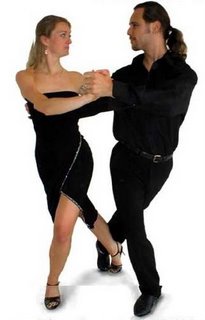
CAMBRIDGE
Argentine Tango in Cambridge
CARDIFF
Tango in Cardiff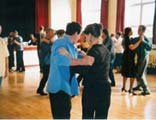
DEVON
Tango Oblivion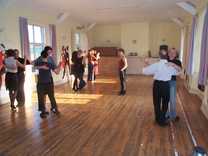
YORKSHIRE
Tango Yorkshire
GLASGOW
Tango in Glasgow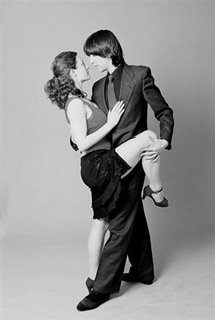
LONDON
Tango Fandango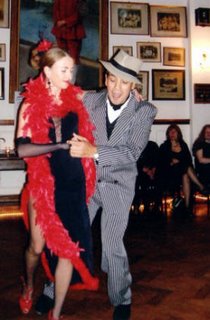
MANCHESTER
Tango in Manchester
La Tasca, 76 Deansgate, Manchester M32FW (city centre)
OXFORD
Argentine Tango Portal
Posted by
Milonguita
at
1:11 PM
0
comments
![]()
Labels: Dance, Milongas, Musicians, Tango Shows
Fine Argentine leather tango shoes
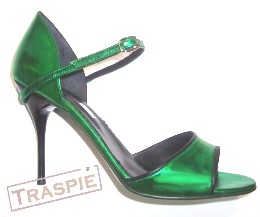
TRASPIE delivers dance shoes and Apparel. They specialize in made to order customized Tango Shoes hand-made in Argentina, as well as a variety of in-stock, ready to wear, dance shoes. They also sell other releated Dance, Collectibles, Folklore, Posters and Music items from Argentina and from all over the world specially from Latin America.
Take a look at their easy to follow Terms and Guidelines and at their unique global Size Chart . You can also convert Convert Inches to centimeters with their specially designed calculator.
Posted by
Milonguita
at
12:41 PM
0
comments
![]()
Milonga and lessons in New York
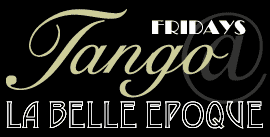
FRIDAY SEPTEMBER 15 @
La Belle Epoque Tango Club @ Ukrainian East Village Restaurant
7:15- 8:15 pm Beginners Tango MARIANA GALASSI
8-9 pm Intermediate Tango class with OLIVER KOLKER
DJ Yessim " La Turca"
9:00 pm - until 2:30 am Dance dance dance
PERFORMANCE TBA
$12
Ukrainian East Village Restaurant:140 2nd Ave (between 8th & 9th St)
click here for a map 212-924-7077
FRIDAY September 22
La Belle Epoque Tango Club @ Ukrainian East Village Restaurant
7:15- 8:15 pm Beginners Tango
8-9 pm Intermediate Tango class Pulpo & Luisa !
(Read about them and about "Pulpo Tango Week" November in Buenos Aires)
DJ Robin Thomas
9:00 pm - until 2:30 am Dance dance dance
PERFORMANCE by Pulpo & Luisa
$12
Ukrainian East Village Restaurant:140 2nd Ave (between 8th & 9th St)
click here for a map 212-924-7077
Posted by
Milonguita
at
10:26 AM
0
comments
![]()
Tango lessons in new York
STEPPING OUT STUDIOS is one of the largest ballroom dance schools in New York City with over 80 classes a week and more than 500 students.
The school offers special programs including IACT! for competitive dancers, Wedding Planning and the OUTdancing program for the GLBT community.
Classes in all styles, ranging from Swing, Latin, and Tango to competitive, as well as traditional ballroom.
Stepping Out Studios is located on 26th Street between 6th Avenue and Broadway in a doorman building with two elevators. They offer a variety of renovated studios to rent for auditions, rehearsals and other events.
Posted by
Milonguita
at
10:02 AM
0
comments
![]()
Labels: Dance
Wednesday, September 20, 2006
Tango and Jazz at "The Jazz Gallery"
Pedro Giraudo Jazz Orchestra
Thursday, September 21
Sets at 9 PM and 10:30 PM - $12
290 Hudson St. (at Spring St) C or E train to Spring St. or #1 train to Houston St.
RESERVATIONS: 212-242-1063
Will Vinson, Todd Bashore, Luke Batson, Carl Maraghi (reeds)
Jonathan Powell, Tatum Greenblatt, Ryan Keberle, Noah Bless (brass)
Jess Jurkovic (piano); Jeff Davis (drums); Tony de Vivo (percussion)
special guest: Sofia Tosello (vocals)
Pedro Giraudo (bass/composition/arrangement)
Posted by
Milonguita
at
4:25 PM
0
comments
![]()
Labels: Tango Shows
Tango dancer´s clothes
What Zanaboni says about his clothes...
"This garments look great in all sizes and ages.
They are low maintenance, designed to be washed in Woolite.
They are comfortable and move with you as you dance."
What I say... "You should see the disigns!"
Posted by
Milonguita
at
4:11 PM
0
comments
![]()
Songs!
EDICIONES MUSICALES SELECT is a company of original composers and music publishers, dedicated solely on the widespread of popular hits. They have an extense catalogue, mainly of TANGOS, with songs that have proven extremely popular and achieved great success in Argentina and around the world.
Posted by
Milonguita
at
4:06 PM
0
comments
![]()
Labels: Music
What are you needing, tanguero?
Tangostore.com is more than a virtual store. You will find an extensive variety of CDs, books, videos, clothing, sheet music and all that a "tanguero" needs. It also has a complete source of information and updates of the musical scene.
Posted by
Milonguita
at
3:51 PM
0
comments
![]()
Labels: Items
From Argentina to the World
If you are you looking for Tango...
- Cd´s (relics, compilations, golden age of Tango, contemporary, female artists, electrotango, instrumental)
- Videos (instructional, performance)
- Books (history, literature, lyrics)
...The Tango Catalogue its a web you should check. You buy online, they send it from Argentina to your home.
Posted by
Milonguita
at
3:26 PM
0
comments
![]()
Labels: Items
Tuesday, September 19, 2006
Aníbal Troilo
He was spellbound by the bandoneon when he heard its sound at cafés in his neighborhood. He was ten when he persuaded his mother into buying one for him. They got it at 140 pesos of that time, to be paid in 14 stallments, but after the fourth payment, the shopkeeper died and no one ever claimed for the rest. With that instrument he played almost during his whole lifetime. His first encounter with an audience was when he was eleven, on a stage near El Abasto, a noisy market of fruit and vegetables, today transformed into a shopping-center. He later was included in a ladies' orchestra, and at fourteen he had the idea of forming a quintet. In December 1930 he was member of the renowned sextet led by the violinist Elvino Vardaro and the pianist Osvaldo Pugliese, where Pichuco had Ciriaco Ortiz as partner for the first time. The second violin of the group was Alfredo Gobbi Jr, later a well-known orchestra leader. No recorded evidence of that mythical sextet has resulted.
In 1931 Troilo had a brief spell with Juan Maglio "Pacho" orchestra. Half way through that year he met Ortiz again in Los Provincianos orchestra, one of the various formed by the label Victor especially for recording. Later he was incorporated in a big orchestra assembled by the violinist Julio De Caro to participate in a contest at the Luna Park (an indoors stadium for boxing and other shows). He then performed for a short time in Juan D'Arienzo, Angel D'Agostino, Luis Petrucelli orchestras and Típica Victor, led then by another famous bandoneonist, Federico Scorticati.
Troilo was member of El Cuarteto del 900, with the accordeonist Feliciano Brunelli, Elvino Vardaro and the flutist Enrique Bour. Later he entered the big orchestra led by the pianist Juan Carlos Cobián for the carnival season in 1937, his last experience before putting together his own orchestra. This happened in that year on July 1st at Marabú night club, where a notice announced: "Today debut: Aníbal Troilo and his orchestra". And another advertised: "Everybody to Marabú / the night club of highest level / where Pichuco and his orchestra / will make you dance nice tangos".
That year he is introduced to Ida Calachi, a girl of Greek origin working at a night local. He married her the following year when he also recorded for the first time as leader. This happened for the Odeon label on March 7, 1938 with the tangos "Comme il faut", by Eduardo Arolas, and "Tinta verde", by Agustín Bardi. However, due to conflicts with the company he did not record again until 1941 when he recorded for Victor once more. He did it on March 4 with his emblematic singer, Francisco Fiorentino, popularly known as Fiore. Troilo's orchestra recorded until June 24, 1971 when he recorded the last of his 449 renditions. To these we have to add the unforgettable pieces achieved by Pichuco with the guitarist Roberto Grela, with the collaboration of Edmundo Zaldívar on guitarrón (a slightly larger guitar tuned a fourth below the normal guitar range) and Enrique Kicho Díaz on contrabass. This memorable quartet recorded 12 pieces in the period June 1955-September 1956. In 1962 they reunited to commit to record ten more tunes, though this time Troilo-Grela's sidemen were Roberto Lainez on guitar, Ernesto Báez on guitarrón and Eugenio Pro on contrabass.

In 1968 he formed the Cuarteto Aníbal Troilo to record for Victor 11 tangos and one milonga. He was accompanied by Ubaldo De Lío (guitar), Rafael Del Bagno (contrabass) and Osvaldo Berlinghieri (piano). If we add two bandoneon duets with Astor Piazzolla in 1970, when they recorded Cobián's "El motivo" and Carlos Gardel's "Volver", we then have a total of 485 recordings released, even though it is presumed that there are several takes which were never released.
Singers of the utmost importance were members of his orchestra, such as Fiorentino, Alberto Marino, Floreal Ruiz, Edmundo Rivero, Jorge Casal, Raúl Berón, Roberto Rufino,Ángel Cárdenas, Elba Berón, Tito Reyes, Nelly Vázquez and Roberto Goyeneche. His pianists systematically turned into orchestra leaders: so happened with Orlando Goñi, José Basso, Carlos Figari, Osvaldo Manzi, Osvaldo Berlinghieri and José Colángelo.
As composer, Troilo contributed an extensive number of major works. Some of his most outstanding titles are: "Toda mi vida", "Barrio de tango", "Pa' que bailen los muchachos", "Garúa", "María", "Sur", "Romance de barrio", "Che, bandoneón", "Discepolín", "Responso", "Patio mío", "Una canción", "La cantina", "Desencuentro" and "La última curda".
He was a mythical character of Buenos Aires, who, as a poet said: "on May 18 his bandoneon fell off his hands".
Posted by
Milonguita
at
9:41 PM
0
comments
![]()
Labels: Musicians



 ho was the fat guy in question that attracted
ho was the fat guy in question that attracted 


